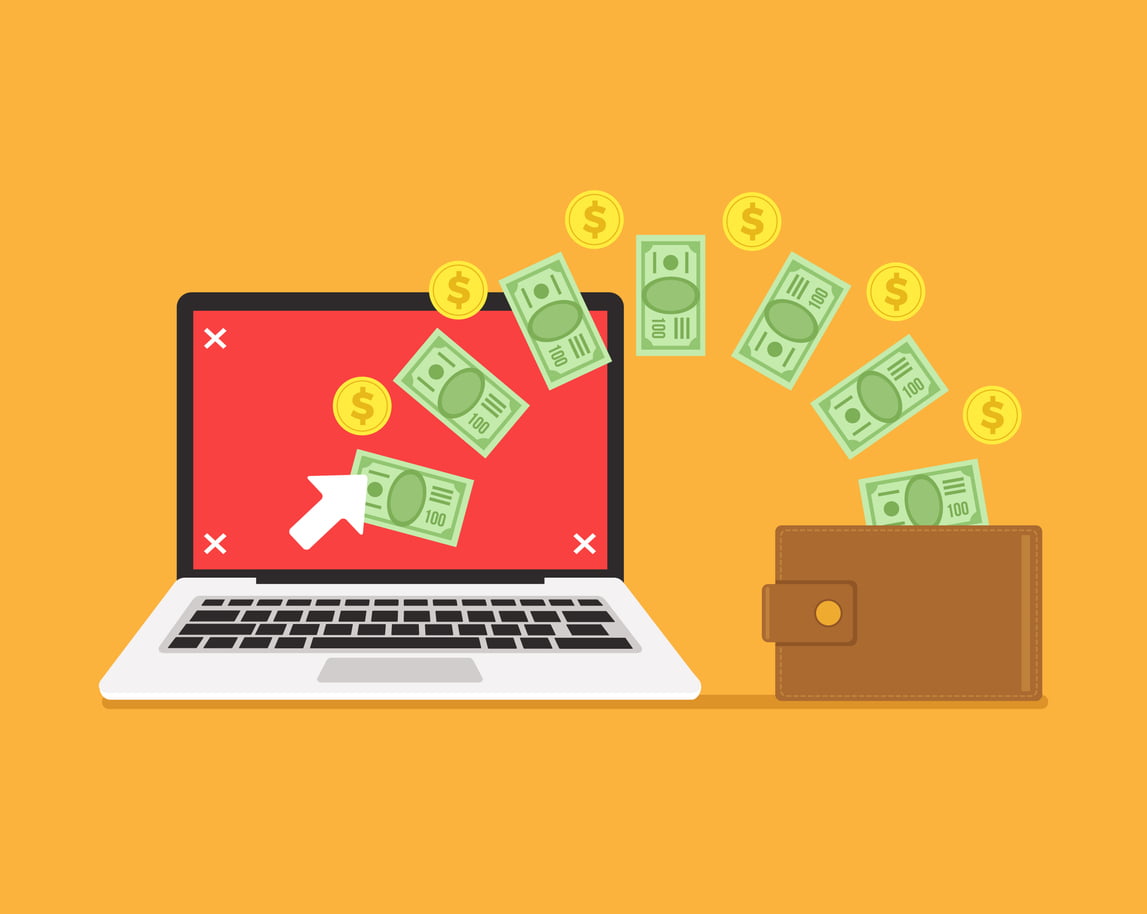
10 Tips for Writing Sales Letters That Sell
Mark Hale ‐ September 5, 2014
Do you want an effective, low cost means of generating leads for your business? You have several tools available to you in your small business marketing tool chest. One of these tools is a sales letter.
Sales letters can be a very powerful tool for creating leads and sales for your business. Sales letters are a simple and direct way to generate interest in your services.
Writing a sales letter is a different animal than designing a postcard, but the two do share some common traits. A sales letter is more dependent on language and the written word to tell and sell a story, so copywriting skills become vital.
Some common questions you may have about sales letters are: How do I start a letter? What should I say in the letter? How long should the letter be? And, will sales letters be effective for my business?
I’ve been creating successful direct mail programs for small and medium size businesses, including sales letters, for many years. And I’ve learned that writing a letter is like building a house. You start with a good solid foundation.
The sales letter foundation is built around an understanding of the recipient and the product you are selling.
- What problems are they having that your product or service solves?
- Why would they (the reader) want to do business with you? Not your reasons, but the customer’s reasons.
- What are the benefits of owning your product or using your service?
The following are 10 keys to writing an effective sales letter:
1. Use a Fitting Salutation
If your budget allows, go for personalization. Any letter I receive that starts with “Dear Mark Hale,” is far more likely to get read than one with a generic salutation, “Hello loyal customer,”
Adding a salutation will add cost because you have to mail merge the letter and then print address on envelope, unless you use a window envelope.
A form letter mailed to a business audience would read “Dear Family Doctor” or “Dear Marketing Manager.” If nothing else, “Dear Friend” is usually a safe bet. Keep in mind nothing says “junk mail” like an impersonal form letter that starts out “Hello friend.”
When it comes to personalization, do not step over a dollar to save a penny. What I mean is, the increase in response gained by personalization of your sales letter over saving a few pennies on the cost of mail merge and addressing and sending out a form letter cannot be underestimated.
2. Headline
In this case, a headline is the first line of the letter, usually presented as a question that presents a problem.
You have to create interest in the first 3 lines of your sales letter. There are infinite ways to begin, but you want to create something that is short, attention grabbing, and maybe even a little startling.
For example: “Did you know that if your child had crooked ugly teeth they are 70% more likely to experience difficulty in life? I found this from personal experience with our first child seeing we did not have the money for braces. Our son Joe’s teeth pointed in all directions of the compass at once, he was very self-conscious about his smile as a result. He always looked unapproachable and unhappy. Later we found this amazing orthodontic program that I wanted to share with you. With this affordable program we were able to afford to fix our son’s teeth. Now our son is very outgoing, successful and happy.”
Notice how punchy and intriguing the first line is, and how the copy plunges right into the meat of the sales pitch with a story chockfull of specifics.
3. Use Stories
When writing a sales letter, one very effective technique is to communicate by telling stories. Your story must present a problem and demonstrate a solution. Use a story to build a mystery that pulls the reader along. As in the example above, I did not tell them what the solution was but hinted at it. The solution would come a little later in the sales letter.
Of course, your letter opening doesn’t have to be this involved. Sometimes it’s best to get right to the point, as I did in this business-to-business lead generation letter:
Dear John Doe,
I have a FREE Demo CD you should see. May I send it to you?
This five minute CD demonstrates how our software will free up time and how you can increase your sales 5X in three short months.
4. Introduce Your Offer on the First Page
I’ve seen wonderfully persuasive letters in which the offer appears at the end of the letter. The rule is to always present the offer, in some form, on the first page.
5. If Writing a Multipage Sales Letter, Break Your First Page Mid-Sentence
Curiosity and the urge for closure will encouraged your readers to flip the page and continue reading when a sentence does not end at the bottom of the first page and continues on the next page.
For multipage letters, printed on one side only, you might consider doing this on every page. Though doing so could become annoying in letters longer than four pages.
Anywhere the reader must physically turn a page, consider adding a typed or a handwritten nudge (lower-right of the page), such as, “More” or “Flip over, please.”
6. Remember the Purpose of Your Sales Letter
The purpose of your sales letter is to get interest and generate a reach for your service in the form of a phone call, website visit or personal visit to your business. The body of a sales letter should include benefits, facts, testimonials, and specifics of whatever kind required. Be careful not to dump every detail of your product or service in your letter. Too much information will kill the reach. You want your sales letter to make a personal connection with the reader and present your sales pitch.
If you have a great deal of supporting information you wish to include, then put it in a brochure. Letters and brochures should not duplicate one another. Ideally you would use a brochure to help close the prospect on the service. Some of our clients include the brochure with the letter, while others prefer to send the brochure out as a follow-up piece to prospect that inquired. My recommendation is to send the brochure as a follow-up to inquiries that you did not close. The reason is that people generally will not read a lot of material that is sent to them unsolicited, and too much information will kill the reach. You want to have a live communication with the prospect and most products or services do in fact require a live communication to close the business.
7. How Long Does a Sales Letter Need to Be?
A sales letter should be just as long as it needs to be. No more. No less.
Most true sales letters run 4-8 pages. Longer letters can work for information-intensive products. Shorter letters can work for lead generation and very simple offers.
An experienced writer will have a sense for what is needed to do the job. This is where knowing your prospect comes in play.
8. Don’t Forget the Call to Action
Many sales letters do not know when to quit—they go on and on. You should state your full offer, guarantee, and a clear call to action. Then stop writing. We have other marketing articles on creating a call to action so I won’t go into long detail on that.
9. Have the Right Person Sign the Letter
Often, the signature is that of a person of high authority, such as the president of the company. But it could also be a vice-president, editor, publisher, inventor, marketing director, or spokesperson.
This decision shouldn’t be “political.” Ask yourself, “Who would make this offer? Who would people expect to make this offer? Who would people be most inclined to listen to and believe?”
When possible, print the signature in blue to make it appear more personal. Also, pay attention to how the signature looks. It should look clean and readable.
10. Don’t Forget the Postscript
People like to know whom a letter is from, so they’ll often glance at the signature at the end of the letter before they read anything. Therefore, because of its proximity, the postscript is in a visual hot spot on your sales letter.
A postscript should be relatively short and should present an important message. This is a prime location to add a buy now offer. If the reader acts now, something else of benefit is offered. To really bring it home, write the postscript in a handwritten font and in blue ink.
We offer many different types of sales letters from Handwritten Note Cards, to Check Mailers with a Sales Letters to Holiday Cards. All can be a very effective means to generate leads for your business.
Want to See Free Sample of Sales Letters?
If we can help you please let us know.
©2005-2014 Mark Hale, All Rights Reserved
High Quality
Printing And Design
Our Services
- Postcard Printing
- Business Brochures
- Booklet Printing
- Flyers
- Signs and Banners
- Customer Thank You Cards
- Websites
- Custom Pocket Folders
Join 1,000s of
happy customers








